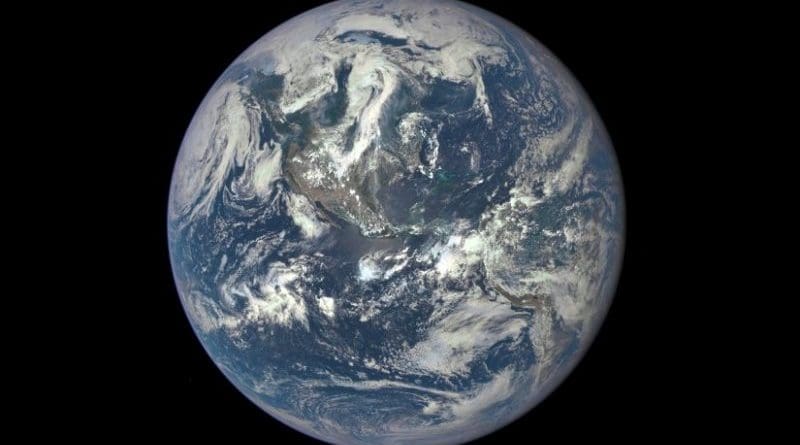Discovering A New Fundamental Underwater Force
A team of mathematicians from the University of North Carolina at Chapel Hill and Brown University has discovered a new phenomenon that generates a fluidic force capable of moving and binding particles immersed in density-layered fluids. The breakthrough offers an alternative to previously held assumptions about how particles accumulate in lakes and oceans and could lead to applications in locating biological hotspots, cleaning up the environment and even in sorting and packing.
How matter settles and aggregates under gravitation in fluid systems, such as lakes and oceans, is a broad and important area of scientific study, one that greatly impacts humanity and the planet. Consider “marine snow,” the shower of organic matter constantly falling from upper waters to the deep ocean. Not only is nutrient-rich marine snow essential to the global food chain, but its accumulations in the briny deep represent the Earth’s largest carbon sink and one of the least-understood components of the planet’s carbon cycle. There is also the growing concern over microplastics swirling in ocean gyres.
Ocean particle accumulation has long been understood as the result of chance collisions and adhesion. But an entirely different and unexpected phenomenon is at work in the water column, according to a paper published in Nature Communications by a team led by professors Richard McLaughlin and Roberto Camassa of the Carolina Center for Interdisciplinary Applied Mathematics in the College of Arts & Sciences, along with their UNC-Chapel Hill graduate student Robert Hunt and Dan Harris of the School of Engineering at Brown University.
In the paper, the researchers demonstrate that particles suspended in fluids of different densities, such as seawater of varying layers of salinity, exhibit two previously undiscovered behaviors. First, the particles self-assemble without electrostatic or magnetic attraction or, in the case of micro-organisms, without propulsion devices such as beating flagella or cilia. Second, they clump together without any need for adhesive or other bonding forces. The larger the cluster, the stronger the attractive force.
Like so many discoveries, this one began accidentally, a couple years ago, during a demonstration for VIPs visiting the Joint Applied Mathematics and Marine Sciences Fluids Lab that Camassa and McLaughlin run. The pair, long fascinated with stratified fluids, intended to show a favorite parlor trick — how spheres dumped into a tank of salt water will “bounce” on their way to the bottom, as long as the fluid is uniformly stratified by density. But the graduate student in charge of the experiment made an error in setting up the density of the lower fluid. The spheres bounced and then hung there, submerged but not sinking to the bottom.
“And then I made what was a good decision,” said McLaughlin, “to not clean up the mess.” Go home, he told the grad student. We’ll, deal with it later. The next morning, the balls were still suspended, but they had begun to cluster together — to self-assemble for no apparent reason.
The researchers eventually discovered the reason, though it took more than two years of benchmark experimental studies and lots of math.
You can see the phenomenon at work in a video the researchers produced. Plastic microbeads dropped into a container of salt water topped with less dense fresh water are pulled down by the force of gravity and thrust upward by buoyancy. As they hang suspended, the interplay between buoyancy and diffusion — acting to balance out the concentration gradient of salt — creates flows around the microbeads, causing them to slowly move. Rather than moving randomly, however, they clump together, solving their own jigsaw-like puzzles. As the clusters grow, the fluid force increases.
“It’s almost like we discovered an effective new force,” Camassa said.
The discovery of this previously unknown first-principle mechanism opens the doors of understanding for how matter organizes in the environment. In highly stratified bodies of water, such as estuaries and the deep ocean, being able to mathematically understand the phenomenon may allow scientists to model and predict the location of biological hotspots, including feeding grounds for commercial fish or endangered species. Harnessing the power of the phenomenon might also lead to better ways to locate ocean microplastics or even petroleum from deep-sea oil spills. Or, in an industrial-sized version of the Fluids Lab experiment, the mechanism might be used to sort materials of different densities, for example different colors of crushed recyclable glass.
“We’ve been working for years with stratified systems, typically looking at how stuff falls through them,” McLaughlin said. “This is one of the most exciting things I’ve encountered in my career.”

